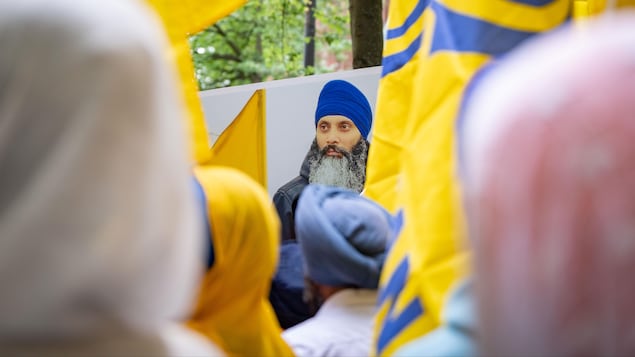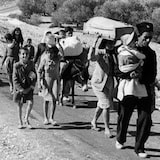- Home
- Society
- History
Portraits of Black Canadians
Find out more about black Canadians who contributed to the building of Canada and who are making their mark every day.
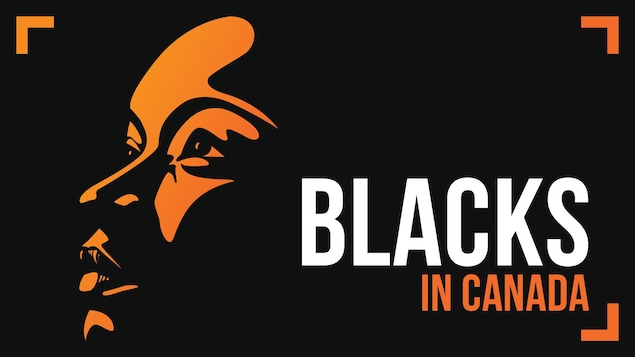
Portraits of Black Canadians
Photo: Radio-Canada / Studio Numérique
From our archives
Danger, hardship, heroism and tragedy. All are features of black immigration to Canada in the nineteenth century.
The story of black immigration to Canada began 400 years ago with the arrival of the French at Port Royal. John Graves Simcoe, the Lieutenant-Governor of Upper Canada, signed the Act Against Slavery in 1793.
Many black people came to Canada by their own means. But the Underground Railroad, an informal network of people and places organized to help black people escaping slavery, was an important feature of immigration to Canada in the nineteenth century.
It’s estimated that between 20,000 and 40,000 black people arrived in Canada during the first half of the nineteenth century. Some consider that the number could be as high as 60,000.
Radio Canada International has produced a series of vignettes spotlighting some of the black Canadians that have marked the country’s past, as well as those that are marking Canada’s present.
Researchers: Nataly Laguë, Audrey Flat
Editors: Suzanne Shugar, Audrey Flat
Translator: Nataly Laguë
Sound recording, sound effects, sound mixing: Angela Leblanc
Producer; casting, music selection: Suzanne Shugar
Executive Producer: Raymond Desmarteau
A Radio Canada International production
Episode 1: Slavery Triangle
We begin the first episode of our podcast series Portraits of Black Canadians with a short introduction into the history of slavery in the Americas. The transatlantic slave trade forced millions of black Africans into bondage.
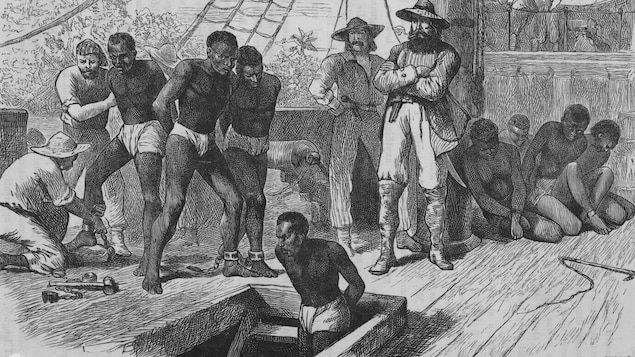
Slaves aboard a slave ship are chained before being put in the hold. Illustration by Swain, circa 1835
Photo: Getty Images / Rischgitz
Episode 2: Mathieu Da Costa
Mathieu Da Costa, the first black man to arrive in Canada, is said to have been born in the Azores. Da Costa was a free black man who in the early 1600s was employed as a translator by French and Dutch traders and explorers. He spoke several languages including French, Dutch and Portuguese, as well as pidgin
Basque, a language used by fishermen on the Atlantic coast that was a mix of a French-Basque dialect and First Nations languages including Mi' kmaq.
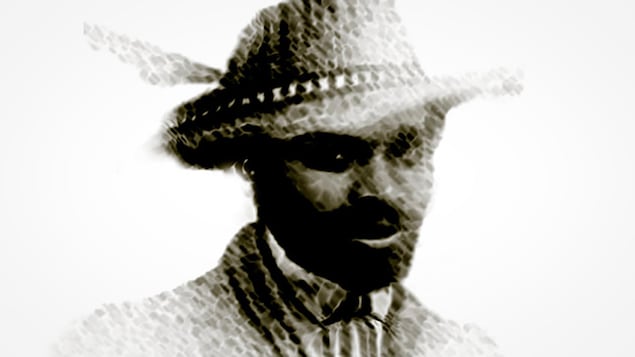
Imagined portrait of Mathieu da Costa. In 1608, Mathieu da Costa was the first black to set foot in Canada.
Photo: Vincent Masson
Episode 3: Olivier Le Jeune
Olivier Le Jeune is the first black person known to have lived and died in Canada. He was also Canada’s first recorded African slave. Le Jeune was about seven years old when he was brought to Canada from Madagascar during the British invasion of what was known then as New France in 1628.
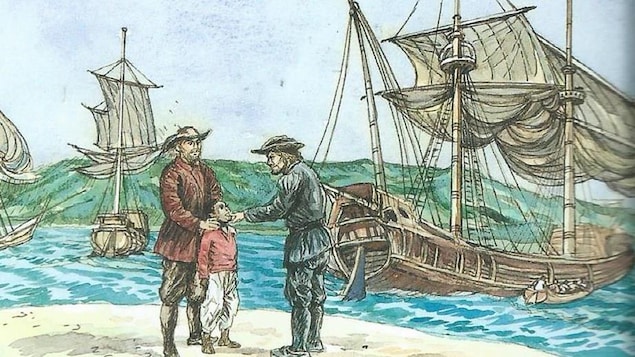
Olivier Le Jeune, first African slave in Canada. Illustration from Kids Book of Black Canadian History written by Rosemary Sadlier and illustrated by Qijun Wang is used with permission from Kids Can Press Ltd, Toronto, Canada.
Photo: Qijun Wang
Episode 4: Slavery laws
A number of slavery laws, in addition to Indigenous slavery customs, existed in Canada both under the French rule and British rule until slavery was officially abolished in 1833.

The Black Code or Compendium of the regulations rendered up to the present, Concerning the Government, the Administration of Justice, the Police, the Discipline and the Trade of Negroes in the French Colonies. And the Councils and Companies established on this subject, In Paris, Chez Prault pere, Printer of Monseigneur the Chancellor, Quai de Gêvres, in Paradise. Mr. DCC. XLII. (1742), With Privilege of the King.
Photo: Palais du Luxembourg - France, Louis XV, Prault pere
Episode 5: Slave rebellions
Slaves in North America and the Caribbean staged several rebellions and engaged in other forms of resistance against their masters.
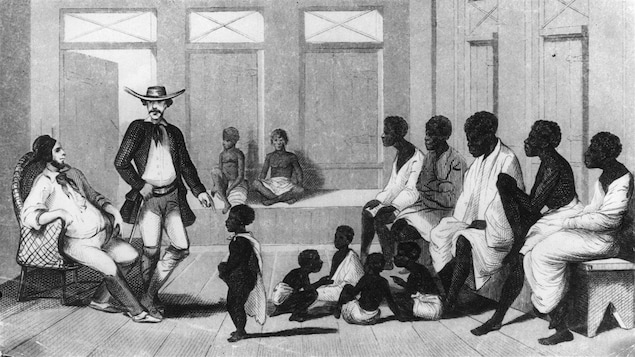
Brazilian slave traders inspect a group of Africans being shipped into the country for sale.
Photo: Getty Images / Archives Hulton
Episode 6: Africville
Today, we bring you the story of Africville, the beating heart of the African Canadian community in Nova Scotia until it was bulldozed over in the 1960s to make way for other projects, including private housing, ramps for the A. Murray MacKay Bridge, and the Fairview Container Terminal. The central area was turned into a dog park called Seaview Park.
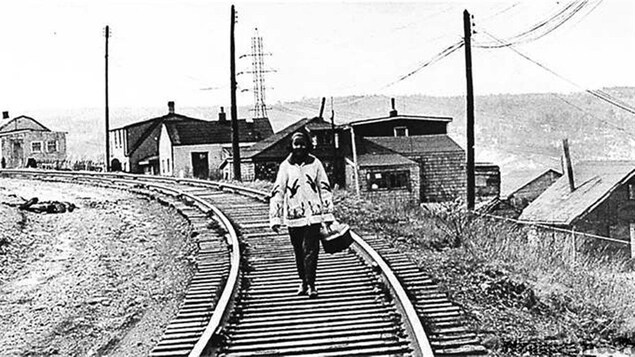
A woman walks along a train track in the early 1960s near Halifax, Nova Scotia in a small community nicknamed Africville.
Photo: La Presse canadienne
Episode 7: Josiah Henson
Today, we bring you the story of Josiah Henson. His remarkable life story inspired American author Harriet Beecher Stowe to write her famous anti-slavery novel Uncle Tom's Cabin
.

Josiah Henson of Dresden Ontario shown in 1877. His 1849 autobiography was the inspiration for Harriet Beecher Stowe's novel, "Uncle Tom's Cabin"
Photo: Uncle Tom's Cabin Historic Site
Episode 8: Harriet Tubman
Today we bring you the story of Harriet Tubman. She was a courageous conductor
on the Underground Railroad, who led hundreds of American slaves to freedom in Canada.
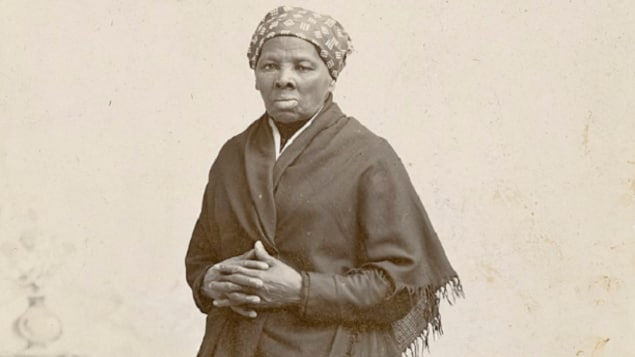
Harriet Tubman
Photo: Horatio Seymour Squyer - National Portrait Gallery
Episode 9: Anti-slavery movement in Canada
The Anti-Slavery Society of Canada was formed in Canada West (now Ontario) in 1851 to promote the global abolition of slavery and provide relief to African American refugees seeking freedom in Canada.

First Report of the Canadian Anti-Slavery Society - March 24, 1852
Photo: n/a
Episode 10: The Press and the Anti-Slavery Movement
Today we bring you the story of 19th century Canadian publications such as Voice of the Fugitive and The Globe advocating for freedom from bondage.
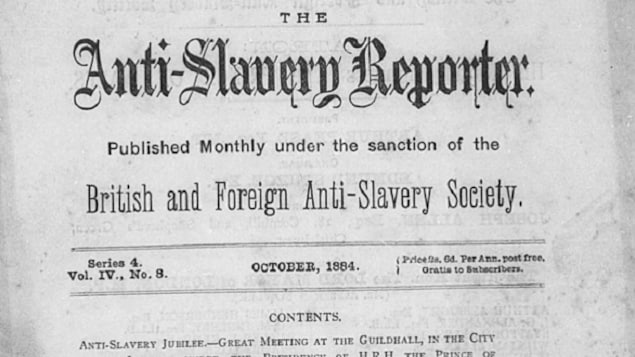
Anti-Slavery Reporter, October 1884 to February 1885
Photo: Library of Congress, États-Unis
Episode 11: Mary Ann Shadd Cary
Today, we bring you the story of Mary Ann Shadd Cary. She moved to Canada from the United States in 1851 and eventually began editing The Provincial Freeman, a weekly newspaper first printed on March 24, 1853. This made Shadd the first Black woman in North America to publish a newspaper, and one of the first female journalists in Canada. During the Civil War she moved back to the U.S. and began work as a recruitment agent for the Union Army. Later, she moved to Washington, D.C., where she worked as a teacher. Years later, Shadd pursued law studies at Howard University and in 1883 became one of the first Black women to complete a law degree.
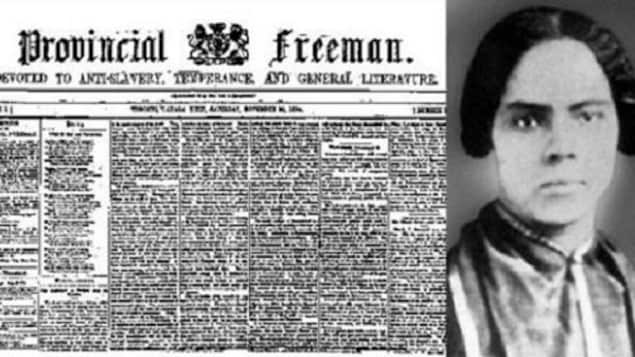
Mary Ann Shadd Cary and a copy of The Provincial Freeman newspaper from the 1850s
Photo: Gouvernement du Canada
Episode 12: William Hall
Petty Officer William Hall was the first black Canadian man to win the Victoria Cross for his actions at the Relief of Lucknow in 1857.
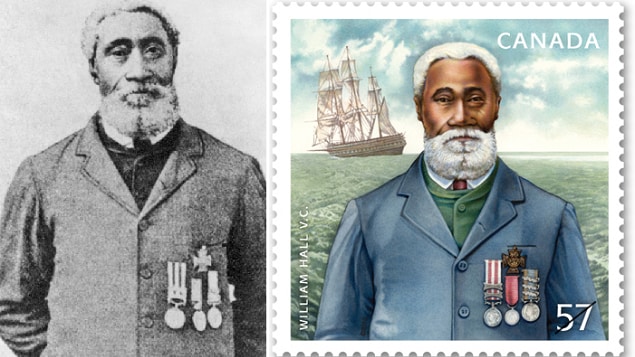
photo of William Hall and stamp in his honor
Photo: Archives Radio-Canada ; Postes Canada
Episode 13: Sam Langford
Samuel Edgar Langford, known as the Boston Terror, is considered by many boxing historians to be one of the greatest fighters of all time.
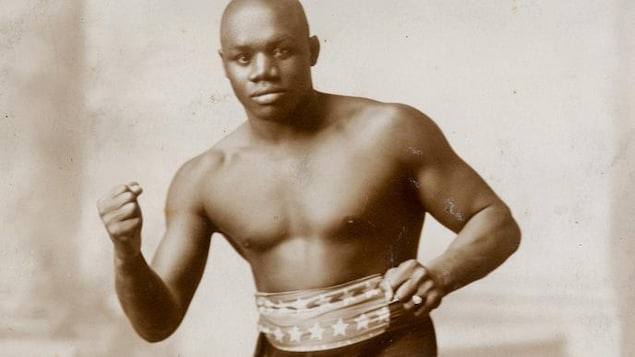
Sam Langford, The "Boston Terror"
Photo: Library of Congress
Episode 14: George Frederick Johnson
George Frederick Johnson enlisted in the Canadian military when he was just 16 years old. Cpl. Johnson served with the 10th Canadian Armoured Regiment and later took part in the D-Day landing in Normandy on June 5, 1944.

Canadian veterans of the Second World War, May 31, 1946
Photo: Photographe : John Boyd - Archives de la ville de Toronto
Episode 15: Lou Hooper
Once Oscar Peterson’s piano teacher, Lou Hooper wrote ragtime classics like The Cakewalk, Black Cat Blues, South Sea Strut and Uncle Remus Stomp. Born in 1894, in North Buxton, Ontario, Hooper died in Charlottetown, PEI in 1977 not long after the debut of the ballet he wrote, called Congo.
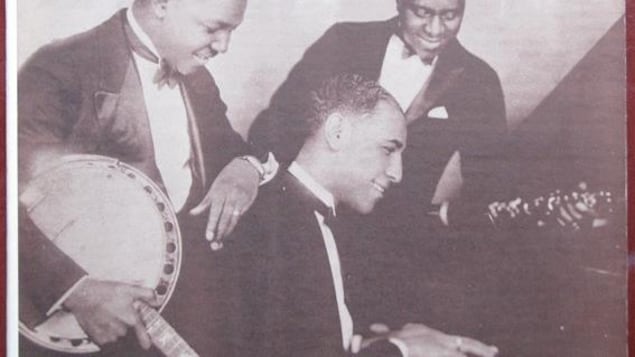
Cover for The Three Jolly Miners 1925-1928, Historical Records – Vol. 23—Banjo: Elmer Snowden; Clarinet: Bob Fuller; Piano: Louis Hooper
Photo: n/a
Episode 16: Portia White
The classical concert signer from Nova Scotia achieved international fame World War Second.In Portia White’s hometown of Truro, Nova Scotia there is a monument in her memory. Following her international career she settled in Toronto and taught voice until she died in 1968. In 2007 she was posthumously awarded the Helen Creighton Lifetime Achievement Award.
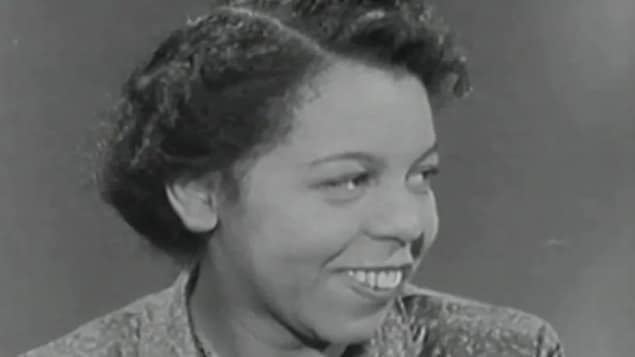
Portia White, seen here on CBC's 'Tabloid' television program in 1958, was the first black Canadian concert singer to achieve international fame.
Photo: Radio-Canada
Episode 17: Oscar Peterson
There’s Oscar Peterson Boulevard and Oscar Peterson Public School in Mississauga, Ontario; Oscar Peterson Square in downtown Toronto; and, in his hometown of Montreal there’s the Oscar Peterson Concert Hall. And, that’s not to mention the 16 honourary degrees between Canada and the United States. The man who wrote the Canadiana Suite received the nation’s highest honour when he was promoted to Companion of the Order of Canada in 1984. And, following 7 Grammy Awards, he received the Recording Academy’s Lifetime Achievement Award in 1997.
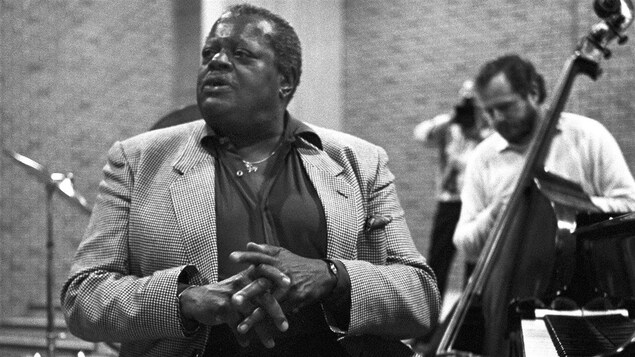
Oscar Peterson in 1986
Photo: Bill Becker
Episode 18: Charlie Biddle
Remembered as the father of the Montreal International Jazz Festival, Charles Biddle lent his name to the club that kept the groove going year-round. Biddles, now known as The House of Jazz, was a draw for jazz stars and fans, from around the world. Charles Biddle was made a member of the Order of Canada in 2003. The Saint Jean Baptiste Society said, ‘without him, Quebecers might not have developed their love for jazz’.
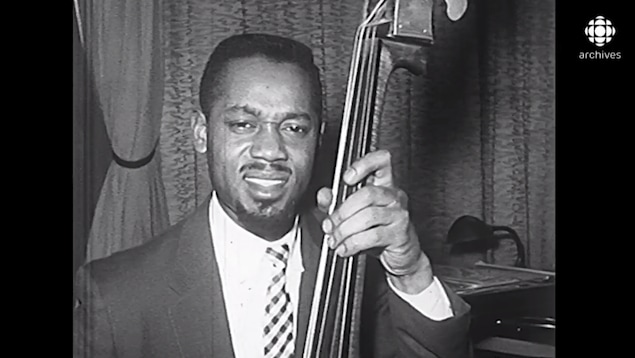
Charles Biddle in 1956
Photo: Radio-Canada
Episode 19: Dr. Hervé Blanchard
Dr. Blanchard has cared for 30 years (1970-2000) for many children in Quebec, notably at the Sainte-Justine Hospital in Montreal, where he saved the lives of newborn babies with congenital anomalies. He is recognized as the pioneer in Quebec of pediatric kidney transplantation (performed for the first time in 1974), and liver transplantation in children (performed for the first time in 1985). This brilliant surgeon also shared his knowledge with more than a generation of students from the Faculty of Medicine at the University of Montreal.

Doctor Hervé Blanchard, Department of Surgery of the University of Montreal
Photo: n/d
Episode 20: Dany Laferrière
The author became a huge success by poking fun at racial stereotypes.
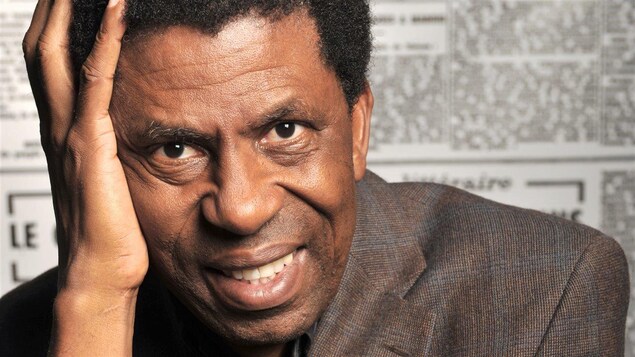
The writer and member of the French Academy Dany Laferrière in 2009
Photo: AFP / MIGUEL MEDINA
Episode 21: Michaëlle Jean
Canada's first black Governor General.
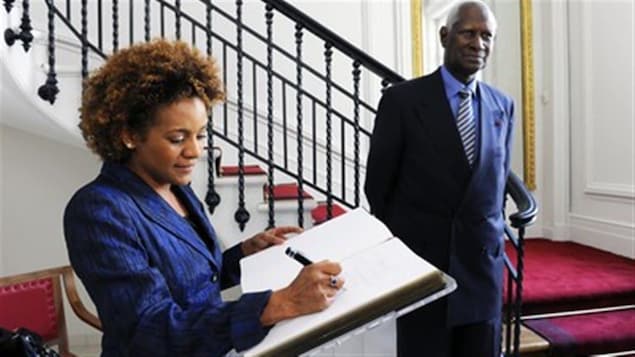
Michaëlle Jean was charged by the International Organization of La Francophonie to ensure the proper use of French during the Olympic Games.
Photo: Organisation internationale de la Francophonie
Episode 22: George Elliott Clarke
The author describes the rich oral narratives and cultural traditions of Blacks in Nova Scotia.
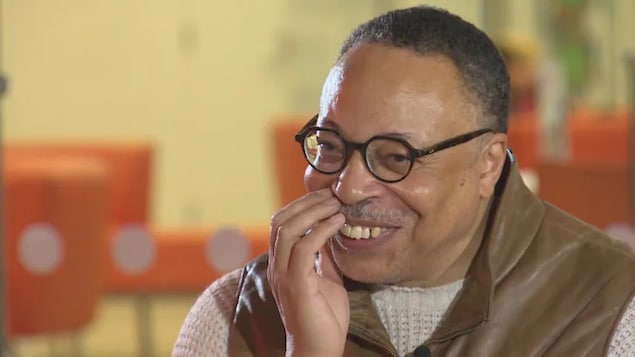
George Elliott Clarke talks about how an early love of books helped shape his career. February 2018
Photo: Radio-Canada / Steve Lawrence
Episode 23: Maka Kotto
Poet, actor, stage director, and first black African elected to the Canadian Parliament.

Maka Kotto
Photo: Benoît Levac
Episode 24: Suzette Mayr
The author spotlights issues involving race and ethnicity for interethnic people.

Suzette Mayr, poet and writer
Photo: suzettemayr.com
Episode 25: Donovan Bailey
The athlete's meteoric rise to fame is one of Canada's remarkable success stories.
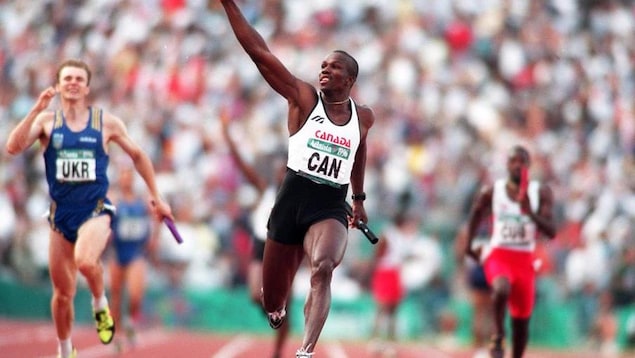
Canada's Donovan Bailey raises his finger to the sky as he first takes the men's 400 meter relay Saturday August 3, 1996 at Olympic Stadium during the 1996 Summer Olympics in Atlanta.
Photo: Cox file photo/E. A. Kennedy
Episode 26: Black History Month
Every February Canadians celebrate the history of Blacks in Canada.

Black History Month
Photo: iStock / Creative_Outlet
Episode 27: Slavery Remembered
The abolition of slavery was commemorated in 2004.

Slaves aboard a slave ship are chained before being put in the hold. Illustration by Swain, circa 1835
Photo: Getty Images / Rischgitz
